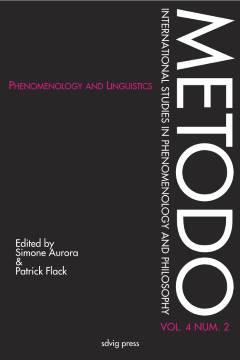La fenomenologia husserliana del linguaggio alla prova storico/teoretica della sua tenuta essenziale
pp. 131-158
Abstract
Saussure’s differential theory, growing out of his historical linguistic practice and ripening in his Course in General Linguistics, states that no sound or concept exists prior to the linguistic system, in which there are only phonetic and conceptual differences. This idea inspired both Merleau-Ponty and the post-Saussurean linguists: the former found ita useful tool in achieving his phenomenological goal without incurring asubjective tendency; the latter made it a principle in the understanding of phonemes and linguistic facts in general. However, Saussure did not explain how the elements of a structure could actually arise from pure differentiation, and this caused a problem for both Merleau-Ponty, who felt it necessary to account for the process as a phenomenologist, and the linguists, who were compelled to consider the process in their abstraction of phonemes from raw data. To solve the problem, Merleau-Ponty turned to his own distinction between the “speaking language” and the “spoken language” as well as Saussure’s “speech”, and highly stressed the act of speaking as the locus where concepts are generated through differentiation. In contrast, the linguists tried to look beneath structural differentiation for more “concrete” and “reliable” guarantees, which they finally found in the atom-like phonetic properties or “distinctive features”, understood as physical existences. Thus, structural differentiation in linguistics was actually reduced to pre-existing “things” and lost its originary status.
Publication details
Published in:
Aurora Simone, Flack Patrick (2016) Phenomenology and linguistics. Metodo 4 (2).
Pages: 131-158
Full citation:
Silvestri Filippo (2016) „La fenomenologia husserliana del linguaggio alla prova storico/teoretica della sua tenuta essenziale“. Metodo 4 (2), 131–158.


